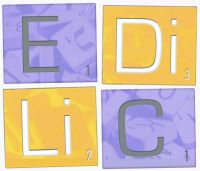Speaker
Description
The discussion on multilingual pedagogy has reached the Finnish educational system as language-aware practices have been embedded into school curricula (Finnish National Agency for Education, 2014) and routines. The importance of a student’s first language is also recognized, even though mother tongue instruction currently exists somewhat on the fringes of the school system (see Emilsson Peskova et al. 2023). Research on actual instructional practices in this context is also limited, particularly studies based on recorded classroom data.
In this presentation, I examine teachers' plurilingual pedagogical practices in Arabic mother tongue classrooms. In Finland, mother tongue instruction is offered as an optional subject for two hours per week for students with a multilingual background. My presentation draws on data from a year and a half of ethnographic fieldwork, during which I recorded a total of 74 double lessons across six different groups in both primary and secondary school settings. In my presentation, I focus specifically on three teaching groups and their three teachers, each of whom has a plurilingual background.
Using detailed examples, I illustrate how multilingual pedagogy is implemented in Arabic-language instruction, facilitating socialization not only into Arabic but also into Finnish. I also demonstrate how teachers’ language-ideological (Silverstein 1979) understandings are reflected in their practices and highlight the differences between the pedagogical approaches of teachers and multilingual school assistants. I argue that the current native language instruction offers an underutilized resource for language socialization and building up plurilingual literacies. Particularly in Asian and African languages, the mother tongue teacher is often the only adult in a pedagogical role with access to the students' first language, alongside detailed knowledge of the distinctions between the first and school languages.
References
Emilsson Peskova, R., Lindholm, A., Ahlholm, M., Vold, E. T., Gunnþórsdóttir, H., Slotte, A. & Busch, S. E. (2023). Second language and mother tongue education for immigrant children in Nordic educational policies: Search for a common Nordic dimension. Nordic Studies in Education, 43(2), 128–144. https://doi.org/10.23865/nse.v43.3982
Finnish National Agency for Education (2014). Perusopetuksen opetussuunnitelman perusteet [Finnish core curriculum for basic education]. Määräykset ja ohjeet, 96. http://www.oph.fi/download/163777_perusopetuksen_opetussuunnitelman_perusteet_2014.pdf
Silverstein, Michael (1979). Language structure and linguistic ideology. In Paul R. Clyne, William F. Hanks, Carol L. Hofbauer (eds.) The elements: a parasession in linguistic units and levels (pp. 193–247). Chicago Linguistic Society.
Content/contenu/Inhalt 2
Die Diskussion über mehrsprachige Pädagogik hat das finnische Bildungssystem erreicht, da sprachbewusste Praktiken in den Lehrplänen (Finnish National Agency for Education, 2014) und schulischen Routinen verankert wurden. Auch die Bedeutung der Erstsprache der Schüler:innen wird zunehmend anerkannt, obwohl der herkunftssprachliche Unterricht derzeit am Rande des Schulsystems angesiedelt ist (vgl. Emilsson Peskova et al. 2023). Forschung zu den tatsächlichen didaktischen Praktiken in diesem Kontext ist ebenfalls begrenzt, insbesondere Studien, die auf im Klassenzimmer erhobenen Daten basieren.
In dieser Präsentation untersuche ich die mehrsprachigen pädagogischen Praktiken von Lehrkräften im herkunftssprachlichen Arabischunterricht in Finnland. In Finnland wird der herkunftssprachliche Unterricht als Wahlfach für Schüler:innen mit mehrsprachigem Hintergrund für zwei Stunden pro Woche angeboten. Die Präsentation basiert auf Daten aus eineinhalb Jahren ethnographischer Feldforschung, während der ich insgesamt 74 Doppelstunden in sechs verschiedenen Gruppen sowohl in der Primar- als auch in der Sekundarstufe aufgezeichnet habe. In meiner Präsentation konzentriere ich mich speziell auf drei Lerngruppen und ihre drei Lehrkräfte, die alle selbst aus einem mehrsprachigen Kontext stammen.
Anhand detaillierter Beispiele zeige ich, wie eine mehrsprachige Pädagogik im Arabischunterricht umgesetzt wird und so zur Sozialisation nicht nur in die arabische, sondern auch in die finnische Sprache beiträgt. Darüber hinaus veranschauliche ich, wie die sprachideologischen Überzeugungen der Lehrkräfte (Silverstein 1979) in ihren Praktiken sichtbar werden und wie sich die didaktischen Ansätze der Lehrkräfte von denen der mehrsprachigen Schulassistenzkräfte unterscheiden. Ich argumentiere, dass der derzeitige herkunftssprachliche Unterricht ein noch wenig genutztes Potenzial für die Sprachsozialisation und den Aufbau mehrsprachiger Literalität bietet. Besonders im Fall asiatischer und afrikanischer Sprachen ist die Herkunftssprachlehrkraft häufig die einzige pädagogische Fachkraft, die Zugang zur Erstsprache der Schüler:innen hat und über tiefgehende Kenntnisse der Unterschiede zwischen der Erst- und der Schulsprache verfügt.
| Only for symposia / Seulement pour symposiums / Nur für Symposien | Exploring teachers’ plurilingual practices in three Nordic countries |
|---|---|
| Title/ titre/Titel 2 | Erforschung der mehrsprachigen Praktiken von Lehrkräften im herkunftssprachlichen Arabischunterricht in Finnland |

